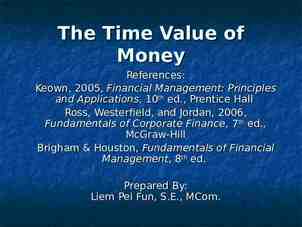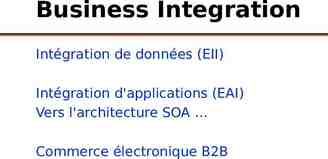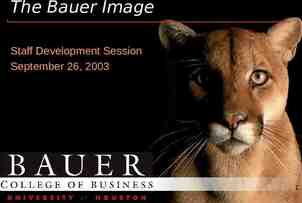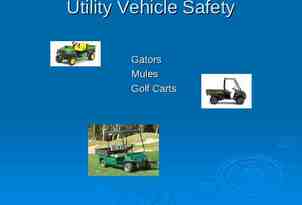Mobile Computing Mohammad L. Habib Instructor: Dr. Aggarwal
30 Slides219.50 KB

Mobile Computing Mohammad L. Habib Instructor: Dr. Aggarwal 60-520-02 1

Presentation Outline What is mobile computing? Comparison to wired networks Why go mobile? Types of wireless devices Mobile objects Moving object databases (MOD) Query language for MOD Applications of mobile computing Challenges Future of mobile computing Conclusion 2

What Is Mobile Computing? What is computing? Operation of computers (according to oxfords advance learner’s dictionary) What is the mobile? That someone /something can move or be moved easily and quickly from place to place What is mobile computing? Users with portable computers still have network connections while they move 3

What Is Mobile Computing? (Cont.) Is using a digital camera “Mobile Computing”, or using an MP3 player or handheld computer (e.g. 3Com’s Palm Pilot or Compaq’s iPAQ 3660)? 4

What Is Mobile Computing? (Cont.) A simple definition could be: Mobile Computing is using a computer (of one kind or another) while on the move Another definition could be: Mobile Computing is when a (work) process is moved from a normal fixed position to a more dynamic position. A third definition could be: Mobile Computing is when a work process is carried out somewhere where it was not previously possible. 5

What Is Mobile Computing? (Cont.) Mobile Computing is an umbrella term used to describe technologies that enable people to access network services anyplace, anytime, and anywhere. 6

Comparison to Wired Net. Wired Networks Mobile Networks - high bandwidth - low bandwidth variability - low bandwidth - high bandwidth - can listen on wire - high power machines - - high resource machines - need physical access(security) - low delay - connected operation - variability hidden terminal problem low power machines low resource machines need proximity higher delay disconnected operation 7

Why Go Mobile? Enable anywhere/anytime connectivity Bring computer communications to areas without pre-existing infrastructure Enable mobility Enable new applications An exciting new research area 8

Types of Wireless Devices Laptops Palmtops PDAs Cell phones Pagers Sensors 9

Mobile Objects A mobile object is some code that carries a state 10

Mobile Objects (Cont.) A mobile object is some code that carries a state that lives on a host 11

Mobile Objects (Cont.) A mobile object is some code that carries a state Lives in a host That visits places 12

Mobile Objects (Cont.) A mobile object is some code that carries a state Lives in a host That visits places which is let in when trusted 13

Mobile Objects (Cont.) A mobile object is some code that carries a state Lives in a host That visits places which is let in when trusted and barred when untrusted 14

Mobile Objects (Cont.) A mobile object is some code that carries a state Lives in a host That visits places which is let in when trusted and barred when untrusted and will refuse to go to untrustworthy places 15

Mobile Objects (Cont.) Mobile objects can talk to their friends 16

Mobile Objects (Cont.) Mobile objects can talk to their friends but only by cooperation of the hosts 17

Moving Object Databases (MOD) Deals with Mobile Objects whose geometry, position changes over time Traditional DBMS alone is incapable for this purpose MOD is built on top of existing DBMS to support a critical set of capabilities 18

Moving Object Databases (MOD) (Cont.) DOMINO (Databases for Moving Objects Tracking) Approach System Architecture DOMINO ArcView GIS Informix DBMS 19

Moving Object Databases (MOD) (Cont.) - Omnitracs developed by Qualcomm Is a commercial system used by the transportation industry Provides location management by connecting vehicles, via satellites, to company DB Vehicles are equipped with GPS, and they they automatically and periodically report their location 20

Query Language for MOD Regular query language (SQL) is nontemporal For MOD we need Spatial and Temporal Query language “Where is the nearest station?” “What is the distance of the closest taxicab?” 21

Query Language for MOD (Cont.) Some proposed query language: - Future Temporal Logic (FTL) - MobSQL SQL like query languages with specific predicates and operators to address temporal issues 22

Query Language for MOD (Cont.) What is the nearest station? SELECT station.name, station.address FROM station in Stations WHERE NEAREST (HERE,station); “At what time truck 12A arrive to Windsor ” SELECT t FROM v in Trucks, c in Cities WHERE v WITHIN(t) c and v.id 12A and c.name Windsor 23

Applications of Mobile Computing Emergency services 24

Applications of Mobile Computing (Cont.) For Estate Agents In courts In companies Stock Information Collection/Control Credit Card Verification Taxi/Truck Dispatch Electronic Mail/Paging 25

Challenges Disconnection Low bandwidth High bandwidth variability Low power and resources Security risks Wide variety terminals and devices with different capabilities Device attributes Fit more functionality into single, smaller device 26

Future of Mobile Computing Use of Artificial Intelligence Integrated Circuitry - Compact Size Increases in Computer Processor speeds 27

Conclusion Mobile computing has severe limitations - however, it is far from impossible, and technology improves all the time Lots of challenges - some have (good) solutions, many others are still waiting to be solved 28

Papers: - References “Moving Object Databases: Issues and Solution” by Ouri Wolfson, Bo Xu, Sam Chaamberlain and Liqin Jiang “DOMINO: Databases for Moving Objects Traking” by Ouri Wolfson, Bo Xu, Sam Chaamberlain, Liqin Jiang and Prasad Sistla “MobSQL, An SQL Like Query Language for Mobile Objets Databases” by Ahmed Lbath and Mourad Ouziri WWW Links: - http://www.doc.ic.ac.uk/ nd/surprise 96/journal/vol4/ vk5/report.html - http://www.doc.ic.ac.uk/ nd/surprise 96/journal/vol1/vk5/article1.ht ml http://www.cs.ucsb.edu/ ebelding/courses/284/w04/slides/intro.pdf http://www.ansa.co.uk/ANSATech/ANSAhtml/98-ansa/external/9807 tb/9807mose.pdf http://www.danishtechnology.dk/it/9238 - 29

Thank You Questions and Comments? 30






